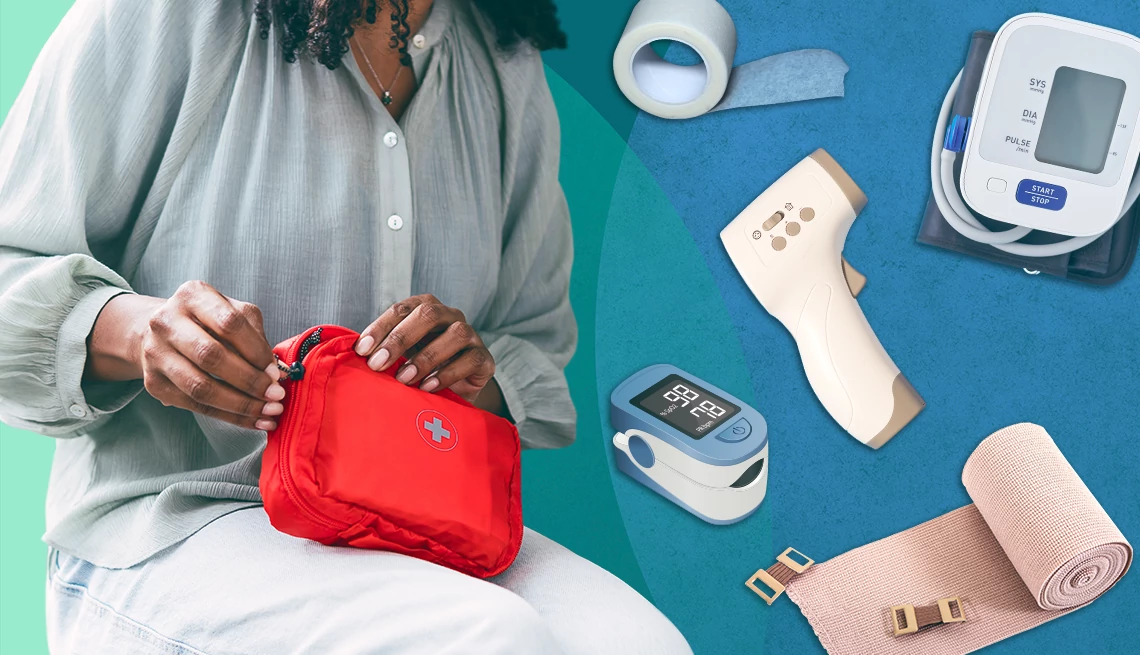
- Select a language for the TTS:
- UK English Female
- UK English Male
- US English Female
- US English Male
- Australian Female
- Australian Male
- Language selected: (auto detect) - EN
Play all audios:
2. CONSIDER SPECIFIC HEALTH CONDITIONS In addition to general first aid items, consider your loved one’s medical condition and include items tailored to their specific needs. It can be
helpful to have some of the items in one place, especially if the main caregiver is handing off to someone else. GLUCOSE TABLETS FOR DIABETES. “The time-sensitive emergency is often low,
rather than high, blood sugar,” says Kevin Biese, MD, director of the division of geriatrics emergency medicine at the University of North Carolina at Chapel Hill School of Medicine. For an
insulin-dependent diabetic, make sure they have access to properly stored insulin and a travel cooler in case they need to travel with insulin. EPIPEN FOR ALLERGIES. If a doctor has
prescribed an EpiPen, consider keeping an extra. “It’s one the few interventions in medicine that can absolutely be lifesaving,” Biese says. EXTRA BANDAGES FOR THOSE ON BLOOD THINNERS. If
your loved one is on blood thinners, keep enough dressings on hand to effectively manage any bleeding, Unwin says. SCALE FOR THOSE WITH HEART OR LUNG DISEASE. If your loved one is short of
breath, keeping track of weight can help pinpoint the problem. For example, if the pulse oximeter shows your loved one has normal oxygen levels in their blood but the scale shows your loved
one weighs eight pounds more today than they weighed five days ago, fluid retention may be causing shortness of breath, says Unwin. With this data, your doctor can guide you on next steps.
COMFORTING ITEMS FOR COGNITIVE ISSUES. Family photos, familiar picture books, or a “fidget blanket,” made with textured material to provide tactile stimulation for patients suffering from
dementia. In addition, writing up a list of strategies for preventing and managing fear, agitation or confusion, can be helpful, Corona-Irwin says. 3. ADD IN TELEHEALTH EQUIPMENT Having the
right tools on hand can help make virtual healthcare visits more effective, as tech advances allow you to “show and tell” what is going on with your loved one, says Unwin. In addition to a
high-quality webcam or smartphone with a camera, a stable internet connection and tool such as a blood pressure monitor next to you allows you to share readings in real time. “There may be
situations with certain heart conditions where (a doctor) will want to know what the blood pressure is in order to decide what to do next,” says Biese. Even taking a photograph of a
laceration and sharing it with your doctor can help them guide you on what to do, says Unwin Check with your loved one’s provider for specific recommendations on what to add for remote
appointments and communication. 4. ADD A “GO” BAG TO YOUR KIT In case of a natural disaster or a visit to the emergency room, it’s a good idea to have a special “go” bag within your main kit
or stashed near it. Even if you and your loved one are just leaving for a weekend trip to visit family, it can be useful to take the items with you. MEDICAL SUMMARY. List supplements,
prescription and over-the-counter medications with information on what each treats, the dosage, and administration times. Include details on any recent vaccinations, hospitalizations,
allergies, and any devices – such as hearing aids – or joint implants.







